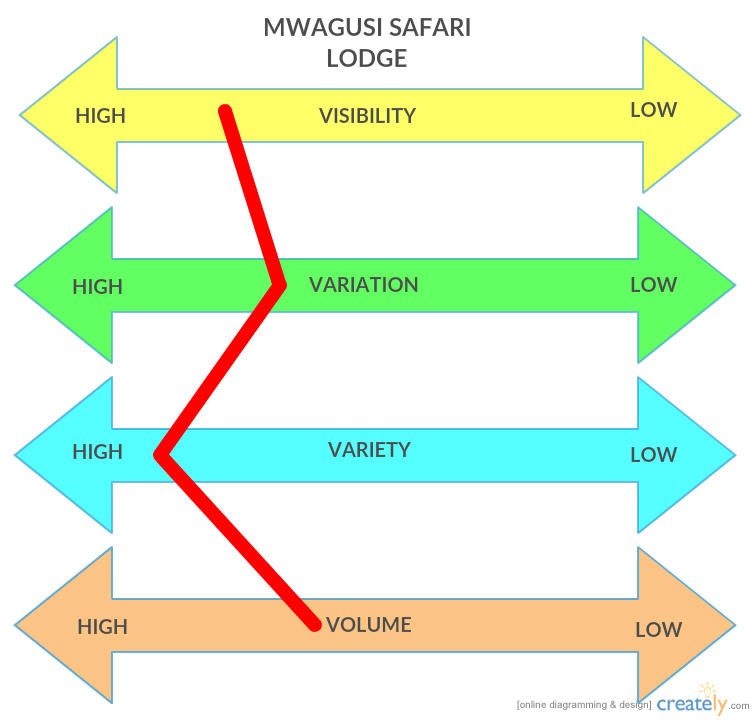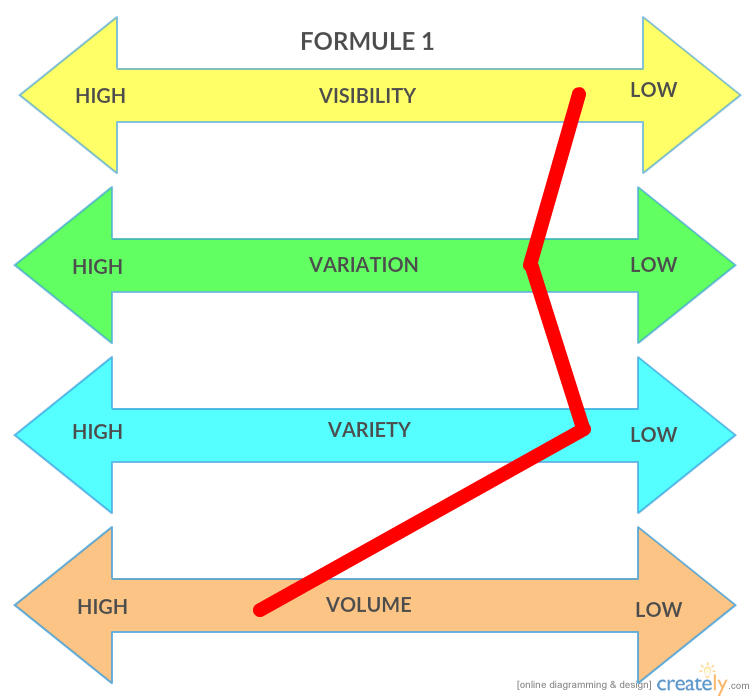The operation function of a business is the key activity of any enterprise. Even though they often significantly differ from one another, there is one commonality between all operation processes: the transformation of capital, work, and knowledge into goods and services. The two operations are extremely similar in many ways; both Formule 1 and Mwagusi Safari Lodge convert resources into services on a different scale. However, there are also many significant differences between businesses that can be explored in the framework of the four Vs: volume, variety, variation, and visibility.
Volume is an important dimension of both operations that dictate the way they are being organized (Slack, Chambers and Johnston 19). Due to the small number of clients in the lodge, the volume of operation processes is small, thus allowing the business to have less systemization in delivering their services and instead concentrate on higher quality. However, considering that each member of staff has to perform on the multifunctional level thereby reducing repetition of the process, the costs of Mwagusi Safari Lodge operations are high. Formula 1 on the other hand, has a higher rate of customer contact, thus needing standardization. It also relies heavily on the use of technology, and in so doing decreases their operating expenses.
Mwagusi Safari Lodge can provide a high variety of services for their customers. The business offers two staff members for each customer catering to many of their needs. In contrast, Formule 1 does not perform so well on the variety dimension having regular and highly systematized services. To increase affordability, the hotel chain does not have restaurants and instead tries to locate their facilities close to existing cafeterias and other businesses that serve food and beverages (Slack, Chambers and Johnston 20).
Variation in demand has different implications for two companies. Mwagusi Safari Lodge is positioned relatively high on the variation dimension, thus allowing the business to have higher visibility. The operation can easily define “customers’ requirements” and successfully cater to them (Slack, Chambers and Johnston 20). However, it inevitably translates into the increased costs and use of human resources. Formula 1, on the other hand, has a little variation and very predictable demand for their services; thus, allowing them to utilize all resources to the full extent and keep low costs of operation (Bamford and Forrester 74).
Mwagusi Safari Lodge finds itself on the high side of the visibility scale. It is a very important dimension for the business as it determines how customers react to the way it is being conducted. Direct contact with customers guides the process of transformation of input resources into output services. Considering, that lodge always has two staff members per customer, the waiting tolerance of their clients is higher than that of Formula 1 customers. Moreover, Mwagusi Safari Lodge can minimize the “time lag” between ordering their services and having them delivered thereby significantly increasing customers’ satisfaction (Slack, Chambers and Johnston 20).
Conversely, Formula 1 serves a relatively high number of customers and operates in an environment of standardized procedures and practices, thus scoring substantially lower on the visibility scale. Their customers cannot make specific food requests and are only being delivered continental breakfasts in a narrow time frame. Even though such an approach significantly reduces operating costs allowing a higher level of standardization and automation, it translates into lower visibility (Bendell 117).
The different positions on the four Vs dimensions of both operations are dictated by the specific market demands the businesses cater for and illustrated below.


Works Cited
Bamford, David and Paul Forrester. Essential Guide to Operations Management. Hoboken, NJ: John Wiley & Sons, 2010. Print.
Bendell, A. Building Anti-Fragile Organisations. London: Routledge, 2016. Print.
Slack, Nigel, Stuart Chambers, and Robert Johnston. Operations Management. Harlow: Financial Times Prentice Hall, 2010. Print.